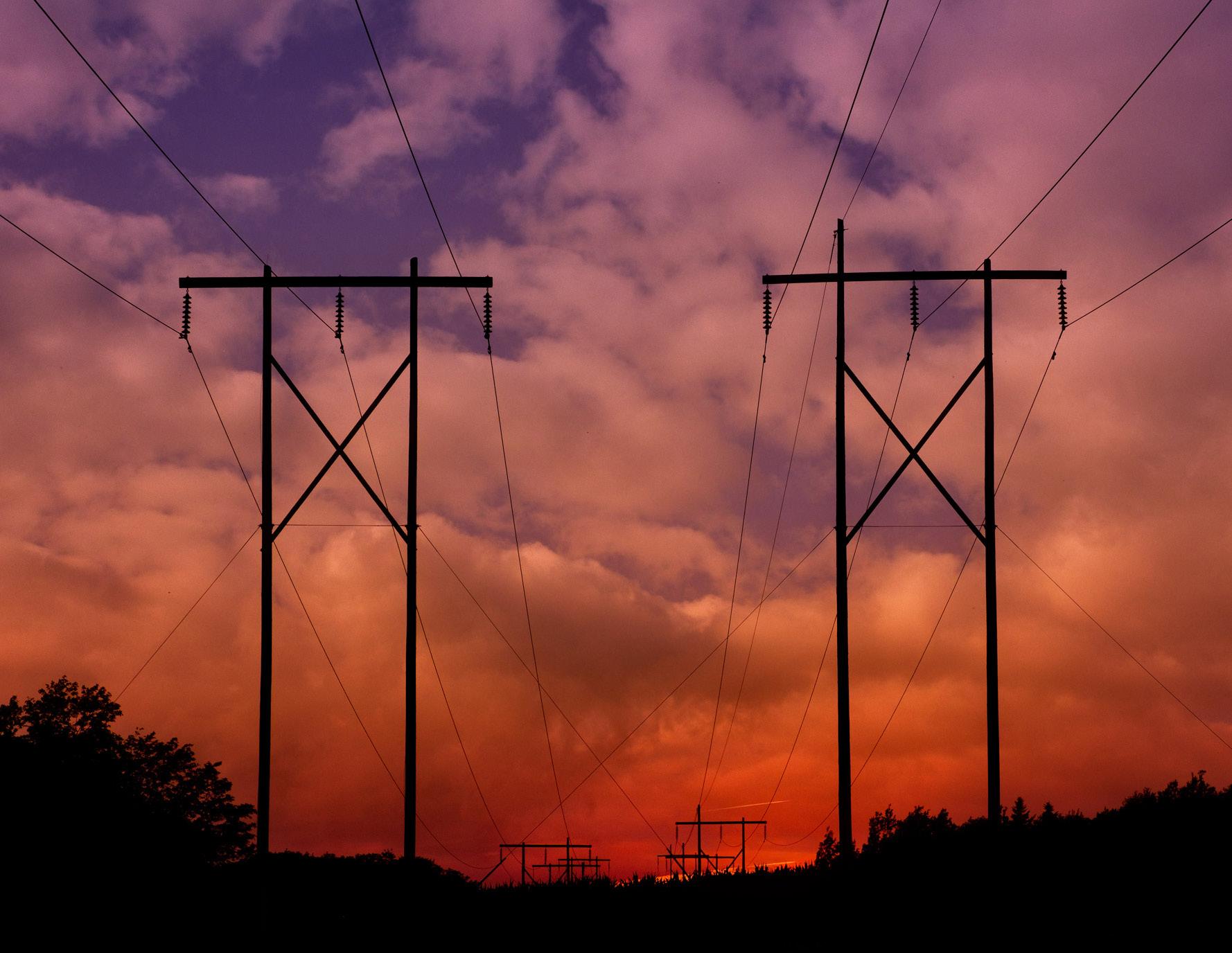MARITIME ELECTRIC




At Maritime Electric, we are working to power a sustainable energy future for our customers. We are aligned with the global response to climate change as outlined in the 2015 Paris Agreement, an international treaty on climate change under the United Nations Framework Convention on Climate Change (UNFCCC). In 2015, the Paris Agreement was signed by 196 parties at Conference of the Parties known as COP21. We are setting targets that support the Paris Agreement goal of limiting average global temperature rise to well below two degrees Celsius above pre-industrial levels. In preparing our first public sustainability report, we consulted our employees, researched industry best practices and drew from our customers for input. Together, with our customers, we will work to do our part for future generations.
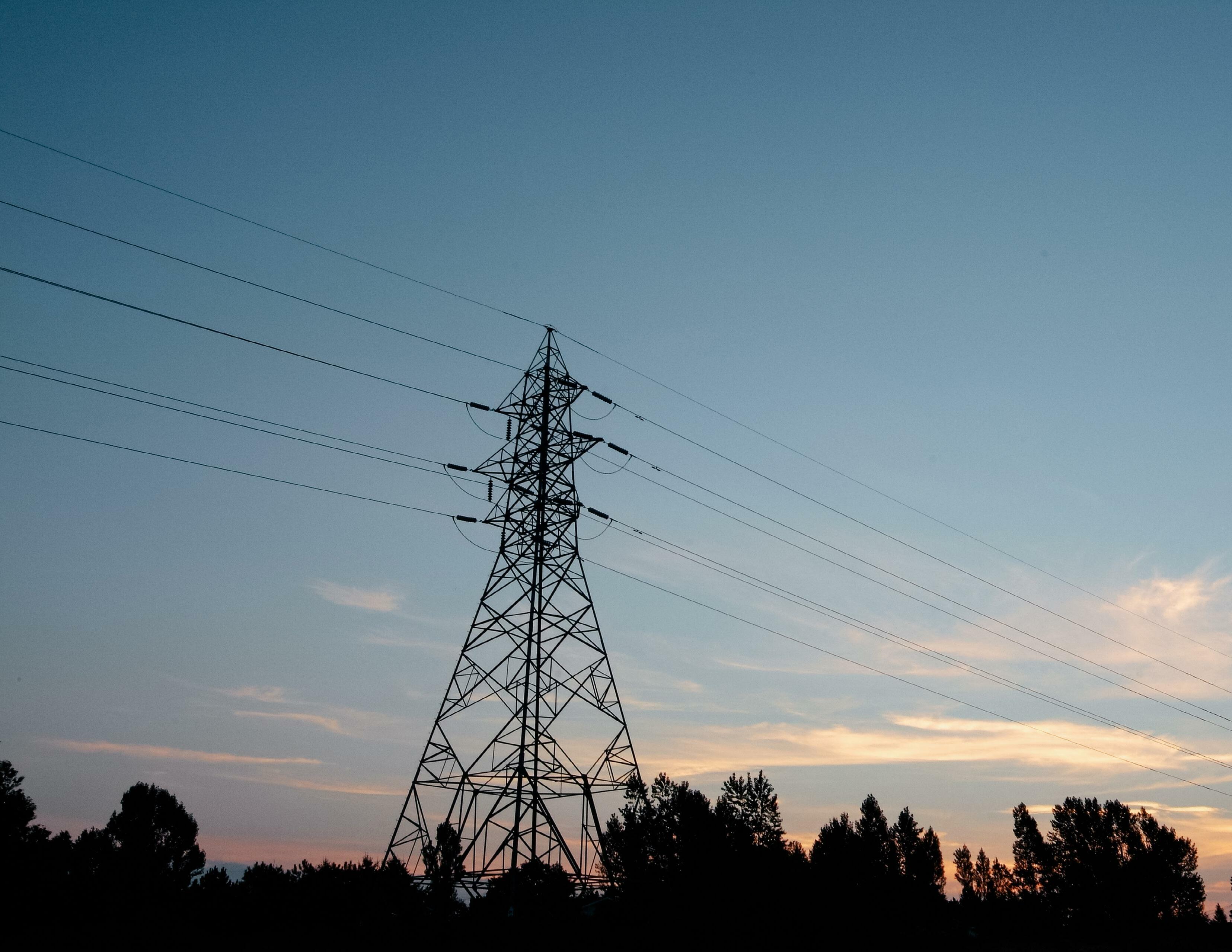
This report is to update our customers on the progress towards and future plans for our sustainability journey, in support of a greener energy future for all Islanders. Data in this report is as of December 31, 2021 unless otherwise stated.
We are proud that this report was written and designed internally by our employees.
We acknowledge that the land upon which Maritime Electric is located is in Mi’kma’ki, the ancestral and unceded territory of the Mi’kmaq People. We pay our respects to the Indigenous Mi’kmaq People, in this modern district of Epekwitk.
Our employees work to power the electrical system for our customers. Every day, crews work on routine maintenance, customer service orders, line rebuilds and new infrastructure developments – all with a focus on safety. This past year, to build an even stronger safety culture, we introduced two new programs: Focus First and Good Catch. Focus First emphasizes being mindful and focused on the task at hand. Good Catch encourages employees to report potential hazards and make suggestions for safety improvements, before an issue results in an accident or injury.


Thank you for taking the time to read our inaugural sustainability report. I am proud of the work we have accomplished to date and am excited for what the future holds for Maritime Electric. For over 100 years, we have delivered safe and reliable electricity to customers from ‘tip-to-tip’ on PEI, and in 2021, we became an Electricity Canada Sustainable Electricity Leader™ – the first in the Fortis Inc. family of companies.
This is an exciting and transformative time in our history as electrification is coming to the forefront. Our vision is to power a sustainable energy future for our customers. We purchase 100 per cent of the on-Island wind energy generated by the PEI Energy Corporation. However, to achieve our longterm goals, we will need to integrate even more renewable energy into our grid.
other initiatives to lower our emissions, our system needs to be ready to accommodate the growing needs of our customers. We need to invest in infrastructure for the future and ensure it can withstand the ever-changing weather as a result of climate change. While doing this work, we remain focused on reliability and affordability for our customers.
Our leadership team and workforce are focused on the task at hand, and we do so with safety above all else. Throughout 2021, we were met with new challenges associated with the COVID-19 pandemic. We adapted by creating new ways of getting the job done, to navigate safely through the pandemic and continue to provide essential service to our customers. I am proud of the way we safely and seamlessly transitioned our operations to keep serving our customers.
mission of providing safe, reliable and sustainable electricity. I am pleased to share our target to reduce GHG emissions from electricity delivered to customers by 55 per cent by 2030. To reach our ambitious target, we will need to integrate more renewable energy through wind and solar projects. As we do so, we will emphasize the importance of a sustainable future for generations of Islanders to come throughout every decision-making process.
“I am pleased to share our target to reduce GHG emissions from electricity delivered to customers by 55 per cent by 2030. “
Additionally, with the decommissioning of the Charlottetown Thermal Generating Station, and
Sustainability is an integral part of our business today and for the future. Our journey forward will be guided by our sustainability pillars: Governance, People, Grid, Environment, Business Excellence, and Community. As an essential service provider in our community, we are committed to doing our part to achieve PEI’s net-zero goals. We are making the necessary plans to follow through on our continued
Our team is hardworking and dedicated to ensuring Maritime Electric remains strong, resilient and reliable for our customers – and for future generations. As we work to deliver on this commitment for 2030, sustainability is the lens we apply across the operation in all that we do to deliver a sustainable energy future.
Jason Roberts President and CEO of Maritime Electric Company, LimitedCEO

“This is an exciting and transformative time in our history as electrification is coming to the forefront.”
Powering a sustainable energy future for all Islanders.

We are an essential part of our community – providing safe, reliable and sustainable electricity.
 A
A

Message from Doug Newson, Chair of the Board of Directors
I am pleased Maritime Electric was the first Fortis Inc. company to be designated an Electricity Canada Sustainable Electricity LeaderTM and I am tremendously proud of the work that led up to being awarded this prestigious designation in 2021.
As the Board, we provide direction and oversight on planning, risk management, sustainability, human resources, environment, finance and safety. To facilitate strong governance, each of these areas are overseen by a committee that has mandated responsibilities related to each focus area. These mandates guide our work and drive our results.

The energy industry is changing as we transition towards a low carbon, sustainable economy. On Prince Edward Island, the work is just beginning. I know Maritime Electric’s diverse, expert team is dedicated to preparing the electrical system for a strong energy future.
Doug Newson Chair of the Board of Directors, Maritime Electric Company, Limited

Safety above all else: All the time. Every time.
Sustainability in action:
We make decisions today that take care of tomorrow.
Collaborative and innovative:
We know there is always more to learn and our team approaches new opportunities with curiosity.
People with integrity: Honest. Transparent. Courageous. Inclusive. We do what’s right.

Rooted in community:
Our employees are family. Our customers are neighbours. We proudly put all our energy into serving Islanders and making an impact in the community.
As an essential service provider, we are part of everyday life on PEI. For over 100 years, we have served customers and focused on building strong infrastructure to support growing electrical needs. We provide safe, reliable and sustainable electricity to over 86,000 customers, connecting the Island and our communities from tip-to-tip.
Maritime Electric operates under the provisions of the Prince Edward Island Electric Power Act and Renewable Energy Act. As a fully integrated electric utility, we own and operate all of the components of the electrical system, including electricity generation, transmission and distribution.
Maritime Electric was our parent company, Fortis Inc.’s, first investment outside of the province of Newfoundland and Labrador. In 2018, we celebrated 100 years of operation. Today, we have 208 employees, three operational service centres for crews across the Island, and offer in-person and virtual customer service options at our head office located in Charlottetown.
Electricity is generated and delivered to customers through our fully integrated electrical system.
A) Electricity is sourced from on-Island wind generation, off-Island energy purchases and we also have onIsland combustion turbines for backup generation during system events; B) electricity is transmitted at high voltages through the transmission system; C) electricity is distributed to customers at lower voltages through the distribution system; D) electricity is delivered to customers’ homes and businesses through electrical meters. We purchase 66 per cent of our energy from NB Power, which is delivered through the subsea cables. We also purchase wind energy from the PEI Energy Corporation.
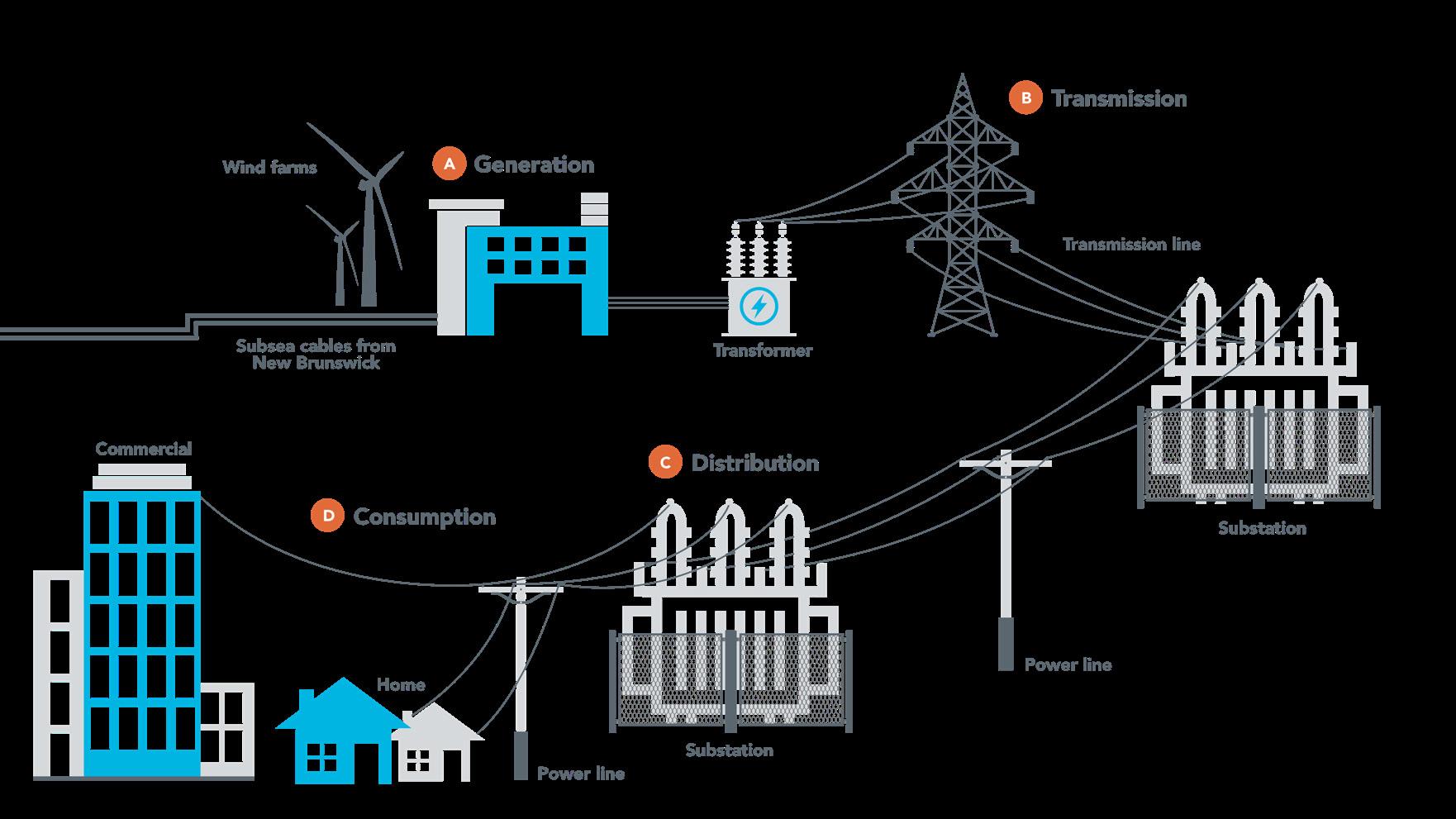
Delivering electricity involves ensuring security of supply and reliability, including backup generation capacity in the event of a major storm or system event. Investing in our transmission and distribution infrastructure is also fundamental to maintaining the reliability of our electrical system. Our infrastructure consists of 30 substations, over 6,500 km of transmission and distribution lines and over 125,000 poles. We also maintain four subsea cables that connect our grid to New Brunswick.
125,000+ distribution and transmission poles across the Island


6,500 KM+ of transmission and distribution lines
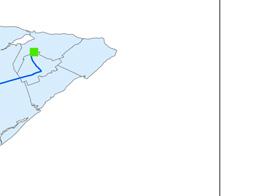

86,000+ customers and growing





208 employees
The Maritime Electric electrical system spans across Prince Edward Island.

(1) The City of Summerside is excluded from our service territory.





















The map shows Maritime Electric’s electrical system, which spans “tip-to-tip.” The system consists of four 138,000 volt subsea cables connecting PEI to New Brunswick, as well as wind farms, combustion turbines, transmission and distribution lines and substations. Maritime Electric purchases 92.5 MW of on-Island wind energy and services approximately 90 per cent of PEI’s total electrical load.1 There is a total of 30 substations on PEI, most of which distribute electricity to a service territory, which are shown as different colours on the map.



$89.5 M+
directly contributed to PEI’s economy in 2021
1st Fortis Inc. company to be awarded the Electricity Canada

2021 was a proud milestone for Maritime Electric as we received the Sustainable Electricity Leader™ designation from Electricity Canada. Obtaining the designation was a rigorous process that included demonstrating conformance with ISO 14001 Environmental Management standard and ISO 26000 Social Responsibility guidelines. In addition to meeting the requirements, verification of compliance was required and completed by a thirdparty auditor.
Since receiving the designation, we have worked to further integrate sustainability across our business operations. This past year, we benchmarked our current sustainability performance and developed a 2030 greenhouse gas (GHG) emissions reduction target. Our goal is to reduce GHG emissions by 55 per cent by 2030 for emissions associated with electricity delivered to customers, with 2019 as a baseline year.
A new electric vehicle roadmap for our vehicle fleet is underway. We are committed to a 100 per cent light-duty electric vehicle fleet by 2032.
Level 2 electric vehicle chargers installed in nine PEI communities
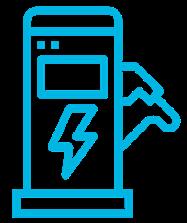
$565 M in total assets
58%
of customers received electronic bills, saving 1 million sheets of paper in 2021
80.5%
of customers rated our quality of service as good or excellent1
7,400 94.6% of new service orders completed within five business days
50 Notes
15 average years of employee service
PURCHASED 100%
of the wind energy generated by the PEI Energy Corporation

1.68
Total Injury Frequency Rate (TIFR) (below Canadian average of 2.29)
97% of polling respondents said they were happy with our service reliability and keeping the lights on2
employee training hours in 2021
$42.2 M invested in capital projects
(1) Narrative Research, 2021 quarterly polling average
(2) Narrative Research, 2021
Our target includes all emissions associated with the electricity on our grid and delivered to customers, with 2019 as our baseline year. To reach the target, we need approximately 100 MW of additional wind energy and 120 MW of solar energy added to our grid by 2030.
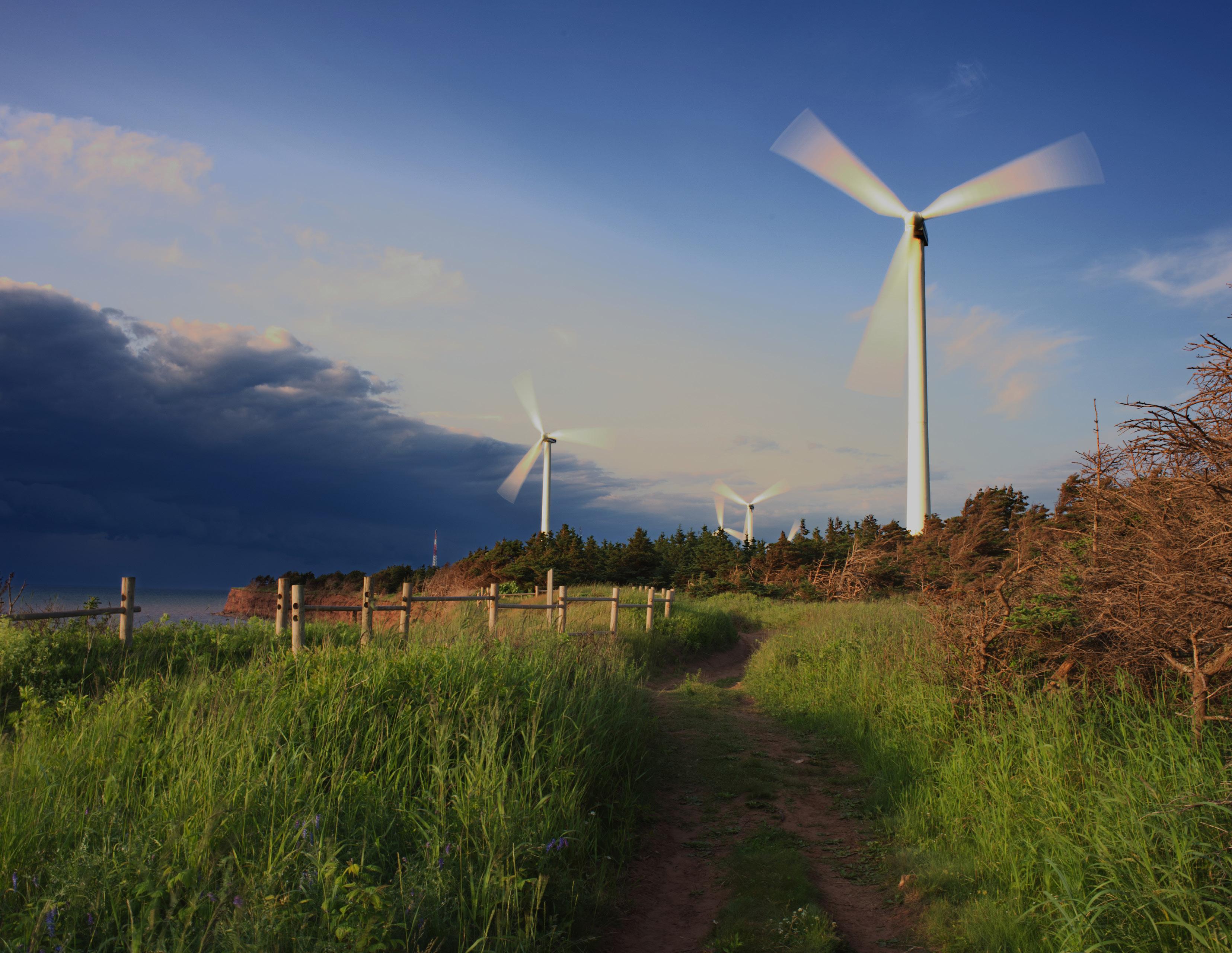


 A Message from Enrique Riveroll, Vice President, Customer Service
A Message from Enrique Riveroll, Vice President, Customer Service

The climate on PEI, like the rest of the world, is changing. We are working across our operations to build a strong and resilient electrical system. Our infrastructure needs to be ready to operate at an increased load due to growing electricity demand and more renewable energy being added to the system. Further, the ability for our infrastructure to operate reliably, in the ever-changing weather conditions due to climate change, has never been more important.
Vulnerability Assessment. The assessment will include climate modeling projections to 2070, which will help determine future planning and system modernization requirements.
As we look across our Island, we know our strategy must include plans to upgrade our infrastructure for decades to come. We participate in the Fortis Sustainability Working Group and the Fortis Operating Group, which offer opportunites for the Fortis Inc. family of companies to share research, insights and best practices on performance, issues, risks and opportunities across North America and the Caribbean. We rely on our shared knowledge to plan and build a sustainable, reliable electrical system to serve our customers for generations with reliable service.
Maritime Electric identified six pillars to help guide our sustainability efforts and goals. We established the benchmark for each pillar in 2021 and we are committed to continuous improvements moving forward.
Our focus is to mitigate risk and build an electrical system for the future. Adapting our system to prepare for climate-related challenges will require significantly more investment in our system. We will work towards hardening our system by using climate modelling to plan and build for the future.

At Maritime Electric, we are working with climate scientists and experts to complete a Climate Change
 Enrique Riveroll
President,
Enrique Riveroll
President,


“We are working across our operations to build a strong and resilient electrical system.”
Maritime Electric’s Board of Directors is focused on strong leadership in the areas of corporate strategy, succession planning, risk management, sustainability and corporate governance. The Board is independent, led by the Chair, and the majority of members are local Island leaders, including the Chair. Also among the Board members are Fortis Inc. senior executives and utility CEOs. This allows us to be connected to Fortis Inc. and subsidiaries across North America to share best practices and create a network of industry experts and leaders. The Board is comprised of two committees: the
Maritime Electric Board of Directors
11 Board members
8 Island community leaders
4 women Board members
31 average years of business experience
Our governance structure is independent and grounded in a local operating model.
Human Resources and Corporate Governance Committee; and the Audit and Environment Committee.
Integrity and sound policies and procedures are core to the way we do things. Our code of conduct sets out the high standards we expect of everyone at Maritime Electric, and the principles and concepts in the code apply across the entire Company.

In 2021, we incorporated new sustainability reporting in the annual Board schedule, which is reviewed by the Human Resources and Corporate Governance Committee on a quarterly basis. The Board is committed to providing strong and effective oversight of our efforts and journey towards a sustainable electricity future. Additionally, in 2021, the Board completed a diversity, equity and inclusion (DEI) survey, the first in a benchmark plan for annual DEI reporting.
Since becoming a Sustainable Electricity LeaderTM, we have implemented several new policies and procedures related to sustainability. Our Sustainability Policy demonstrates our commitment to the sustainability pillars of our business. Other new policies and procedures include: an Employee Volunteer Guideline, a Public and Stakeholder Project Consultation Policy and a Community Outreach and Investment Guideline.
Achievements
Electricity Canada Sustainable Electricity LeaderTM designation
New Sustainability department
Sustainability transparency and public reporting benchmarks developed
Completed DEI Board survey
At Maritime Electric, our 208 employees are the foundation of our success. We take pride in our work as a team. In 2021, 65 per cent of our employees were part of the International Brotherhood of Electrical Workers Union. Our union employees, management employees and contractors work together to achieve our collective goals.
Our team’s commitment and resiliency was particularly evident during the COVID-19 pandemic. During this unprecedented time in our history, we successfully continued serving our customers. We created new ways of operating and worked safely and seamlessly from home, as required, and successfully prevented COVID-19 outbreaks in our facilities.
Maritime Electric is grounded in decades of high safety standards and we continue to focus on improving health and safety. Our Health and Safety Policy outlines our commitment to providing safe and healthy working conditions to prevent injury and illness for all employees, contractors and visitors, and continually improving our health and safety performance. Additionally, through our
annual President’s Safety Awards, we recognized employees whose actions helped ensure the health and safety of their fellow employees, contractors and members of the public. This past year we invested over $600,000 in training and development for our employees. Training topics included safety best practices, safety awareness and skills development. We were also recently recognized as a 2021 top performer by Electricity Canada for our safety incident performance data. The data showed a notable improvement in serious electrical energy incidents, vehicle incidents and ‘struck by/against’ incidents.
Our approach to health and safety is guided by our Health, Safety and Environment Management System (HSEMS) which aligns with ISO 45001. Every three years, we also complete a full safety audit. As an indicator of safety performance, we track our Total Injury Frequency Rate (TIFR). TIFR represents the total number of injuries for every 200,000 hours worked by employees. Last year, we achieved a
TIFR of 1.68, compared to the Canadian national average of 2.29.1
The consistent reporting of near misses reflects a strong safety culture and our employees’ willingness to report incidents when they occur. In 2021, we launched two new safety programs: Focus First and Good Catch. Focus First is a


mindfulness program that encourages employees to manage distractions and remain focused on the task at hand. Our employees know they have the ability to eliminate preventable incidents by being mindful. Good Catch is a program that encourages employees to suggest improvements to work processes, signage or other measures to help control safety hazards and prevent an accident before it happens.
As part of our employee wellness initiatives in 2021, we launched an annual wellness credit, which employees can use towards health and fitness related expenses. We also have an Employee Assistance Program, which provides access to confidential, professional counselling to regular full-time employees, their spouses and dependent children.
As leaders in our communities, we champion diversity, equity and inclusion in the workplace. We strive to create an environment where everyone feels welcome and can bring their authentic selves to work. We introduced the Powering Opportunities for Women campaign to profile women in traditionally male-dominated roles, including
Our employees planted trees at a local park in Charlottetown through our Trees for Life community program. Pictured (left to right): Megan, Cecil and Nayoung.


engineering and operations. As a result, a record number of women applied to the 2021 Power Line Technician Apprenticeship and a selection were invited to participate in the four-week training.
For several years, Maritime Electric’s Women in Energy Leadership Group has encouraged and supported networking and business opportunities for women. We host a business speaker series to learn from other women leaders in our community and create a strong learning network.
We believe in the importance of supporting the
communities we serve. Every year, our employees volunteer countless hours of their time to support organizations and causes across the Island. Employees also have the opportunity to volunteer through our annual Trees for Life program. Each year, Maritime Electric employees plant trees at Island schools, parks or communities as part of the program. Trees help absorb carbon dioxide (CO2), prevent soil erosion and provide shade. The program also fosters teamwork across departments.

Employee engagement is an important aspect of creating a strong corporate culture, and visible
leadership is key to employee engagement. In 2021, we introduced annual employee Town Hall events in which the Executive team presents an overview of business plans and answers employee questions.
Maritime Electric has several employee committees to promote employee engagement and a strong corporate culture. Committees also allow employees to work together on health and safety initiatives. Employee committees include a Joint Occupational Health and Safety Committee, Labour Management Committee, Total Health Committee and Social Light Committee.
In addition to our internal committees, some of our employees participate on Electricity Canada and Canadian Standards Association committees to assist in improving industry standards.

Achievements
Launched Focus First and Good Catch safety programs
Started annual employee wellness credit

Introduced Employee Town Hall events
Our employees take pride in their work to power the lives of our customers.




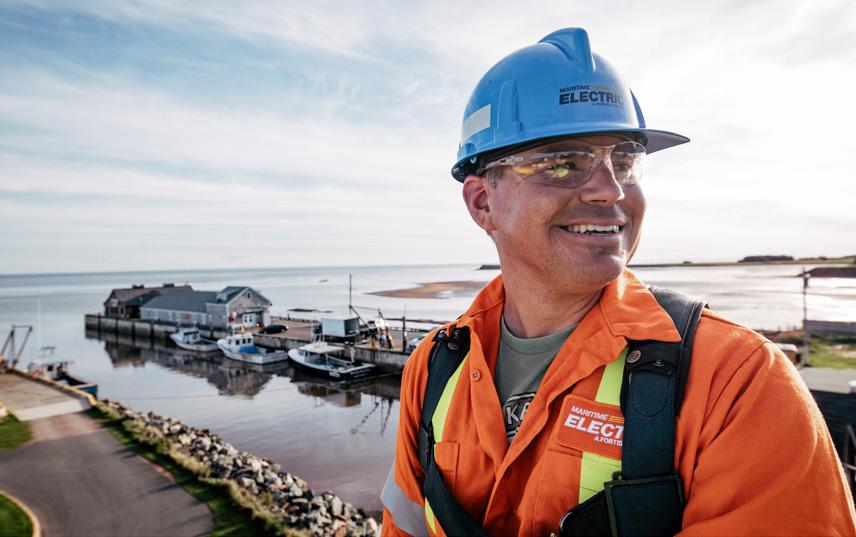
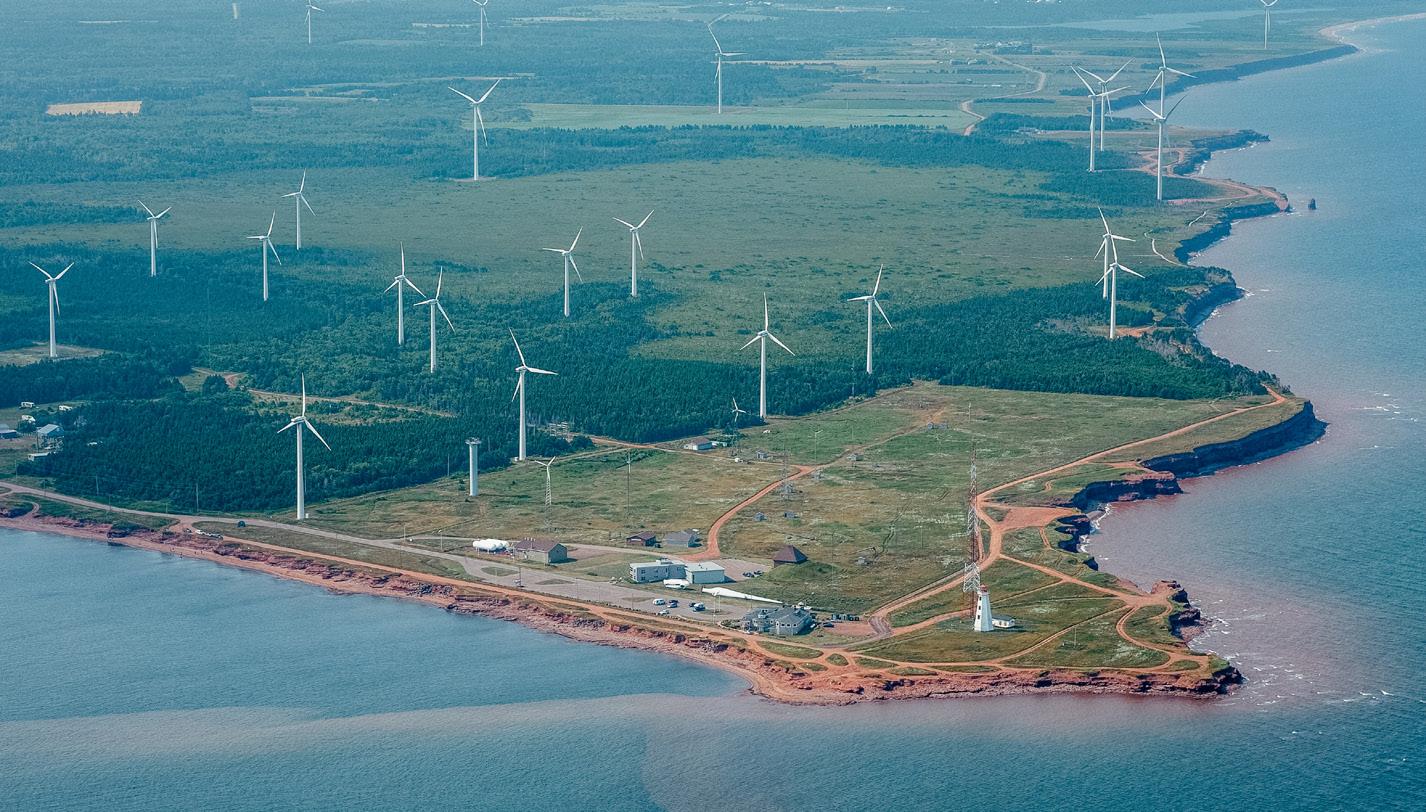
We are committed to supplying Islanders with cleaner and greener electricity. In 2021, we supplied customers with electricity that was 86 per cent non-emitting. In 2021, we purchased over $30 million of wind energy from on-Island wind farms, which represents 19.5 per cent of all energy supplied into our grid.
Incorporating more wind and solar energy sources into our grid is an important part of reaching our target for 2030. This includes helping our customers connect small renewable energy systems (such as rooftop solar) to our grid through our net metering program. In 2021, there were over 1,000 net metering customers connected to our grid.
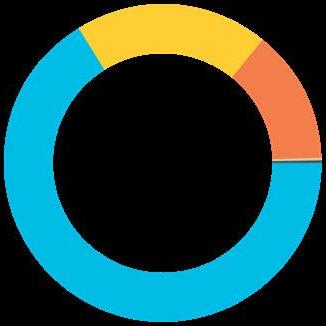
In 2021, we helped over 400 new customers connect small renewable energy systems, such as rooftop solar, to our grid through our net metering program. This represents an increase of over 4,000 kW of new PEI renewable energy installed in 2021.
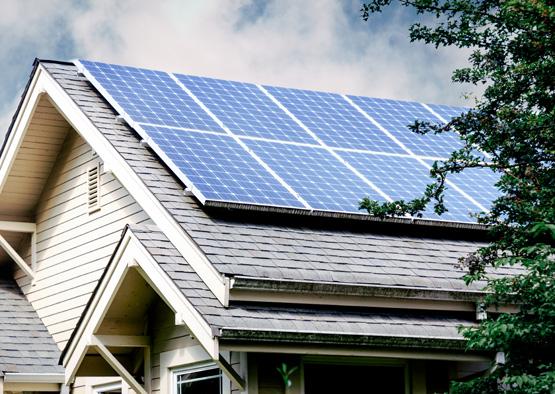

Our target is to reduce total electricity GHG emissions by 55 per cent by 2030.2 This ambitious target exceeds the UNFCCC Paris Agreement emissions pathway of limiting the average global temperature rise to less than two degrees Celsius above pre-industrial levels. It will also support the Government of PEI’s transition to net-zero by 2040. To achieve this, we will need to integrate significantly more renewables, such as wind and solar energy, into our system.
Our infrastructure consists of 30 substations, over 6,500 km of transmission and distribution lines and over 125,000 poles. We also maintain four subsea cables that connect our grid to New Brunswick. These pieces work together to deliver power to over 86,000 customers, both residential and commercial, across the Island.
Planning for the future means planning for electrification. With electrification, our system load is expected to grow significantly in the coming decades. Preparing for this increase
will require investments in grid modifications, system assessments, infrastructure replacements, expansions and reinforcements. We will also need additional substations and infrastructure that provide redundancy and system hardening, new smart grid equipment and more renewable energy to meet our targets.
We are embarking on a major transition in our history. Managing the flow of energy is more complex when adding renewable energy sources due to their intermittent nature. These complexities present challenges and the need to maintain reliability of power for our customers is paramount. Additionally, the Government of PEI and the Government of Canada have set ambitious net-zero plans. We are working to help meet these targets and ensure our system can support the future growth and needs of our customers.
As we plan for the future, investing in our transmission and distribution infrastructure is fundamental to maintaining a strong and resilient grid. We are working with energy suppliers and reviewing our operational practices to be even better for our customers.
Last year, we began a Climate Change Vulnerability Assessment, a system-wide review of the potential long-term impacts of climate change on our system. The assessment involves combining future climate modelling and impacts to evaluate risks towards our infrastructure. The results of the review will help us develop climate change adaptation strategies to strengthen our grid for tomorrow’s climate.
In 2021, the average hours of interruption per customer under normal conditions was 3.04. We continue to work diligently to improve our outage response times. Trees and wind have accounted for the largest portion of power outages in the past decade.

We used artificial intelligence technologies to
Vegetation management is a priority focus to improve reliability of service for our customers.
identify aged eastern cedar distribution poles across the system that needed replacing and to prioritize the replacement cycle. We have currently replaced 39 per cent of the remaining eastern cedar electrical poles since the replacement program began several years ago and are on track to meet our goal of replacing all by 2030.
Adverse weather (Wind and trees) – 51%
Adverse weather (Snow and sleet) – 18%
Foreign interference (Vehicles/ Boom and other) – 11%
Loss of supply (Transmission) – 10%
Scheduled outage (Pre-arranged) – 7%

Defective equipment (Pole and connectors) – 3%
Achievements
New GHG emissions reduction target
86 per cent non-emitting grid in 2021
Wind supplied 19.5 per cent of our energy supply mix
Began Climate Change Vulnerability Assessment
Our approach to environmental stewardship always involves a forward-looking focus, to provide sustainable electricity for our customers for future generations.
At Maritime Electric, we use an Environmental Management System to record spills, maintain a hazardous materials database, manage hazardous waste and complete corrective actions. Every two years, our Environmental Management System undergoes a detailed audit by a third party. As part of our environmental efforts, we also complete thorough inspections of assets that contain hazardous materials to identify potential failures before they happen. These efforts, along with our extensive environmental readiness training, have resulted in strong environmental performance throughout the years. In 2021, there were 13 spills, none of which were considered violations of environmental regulations. Spills typically occur due to equipment failures, weather events or public contacts.
In 2020, Maritime Electric started a polychlorinated biphenyl (PCB) Removal Program to remove all equipment containing PCB with a concentration above 50 parts per million (ppm) from our system. The program follows extensive work to test all of
our transformers from the years prior to 1982 to identify and prioritize transformers for replacement. We are on track to remove all equipment containing PCB with a concentration above 50 ppm by 2025, a requirement by the Government of Canada.
Maritime Electric has an Environmental Protection Plan (EPP) developed by a third party that provides instructions for mitigation during the construction of transmission lines. For larger scale projects, as required by the PEI Environmental Impact Assessment review process, project-specific EPPs identify unique risks to specific areas.

In 2021, we benchmarked our Scope 1, Scope 2 and Scope 3 GHG emissions and recognized the significance of each scope. Our Scope 3 emissions are the highest component of our total emissions at 90 per cent, because we purchase the majority of our electricity from third parties. Our 2030 target to
reduce GHG emissions associated with electricity delivered to customers by 55 per cent includes emissions from our owned fossil fuel generating facilities (Scope 1) and all Scope 2 and Scope 3 emissions. We are committed to reducing the emissions associated with the electricity delivered to customers to ensure a cleaner, greener energy future for PEI. We are also working on plans to reduce our Scope 1 emissions from our operations, including our transportation fleet. We have established a target to convert 100 per cent of our light-duty vehicles to electric by 2032.
Maritime Electric is currently in the process of decommissioning the Charlottetown Thermal Generating Station (CTGS). Before the installation of subsea cables connecting PEI to New Brunswick, CTGS was the primary source of electricity generation on the Island. Over the years, we have
retired steam turbine units at CTGS and reduced fuel and water consumption on the site. We have made significant progress at CTGS since 2015 by decreasing Scope 1 GHG emissions by 87 per cent.
Maritime Electric owns and maintains over 12,000 street lights along PEI roads. Since 2018, we have installed over 9,500 LED street lights. LED street lights are more energy efficient than traditional street lights, consuming less than half of the energy. In 2021, our installed LED street lights helped save approximately 120,000 kWh. Our goal is to convert all of the remaining non-LED street lights to LED by 2025.

In recent years, we have made significant efforts to convert customers from paper to electronic billing. Currently, 58 per cent of our customers receive their Maritime Electric bills electronically, which significantly reduces paper consumption. These customers helped save approximately one million sheets of paper in 2021.
For decades, we have cared for wildlife on PEI while
maintaining our electrical system. Bird species, such as ospreys and eagles, sometimes construct nests on our infrastructure, which can cause outages and put the birds at risk. We have osprey nesting platforms across PEI to provide a safe location for birds to nest. We work with provincial conservation
officers to safely remove ospreys from dangerous locations and relocate them to nesting platforms while keeping nests intact.

87 per cent reduction in Scope 1 GHG emissions since 2015
87 per cent reduction in Scope 1 emissions at the Charlottetown Thermal Generating Station since 2015
Installed over 9,500 LED street lights
120,000 kWh saved in 2021 through LED street light replacement program
58 per cent of customers converted to electronic billing
We strive to continuously improve our performance and customer service by optimizing the use of technology, capital investment, innovation and internal processes.
In 2021, our on-Island contact centre team managed over 175,000 customer inquiries through phone, email, web chat and in-person services. Since 2017, the number of subscribers to our social media channels has nearly tripled. Combined, our Facebook and Twitter accounts had over 18,000 subscribers at year end. Having multiple communication channels is important to meet the needs of our customers.
We track customer service performance and customer satisfaction through multiple channels. Our contact centre uses key performance indicators to track service delivery levels, including Grade of Service, which is based on the volume of customer calls answered within 30 seconds. In 2021, our Grade of Service was 84.8 per cent.

Our quarterly customer satisfaction survey is conducted via phone by a third-party provider. Randomly selected customers are asked a series
of questions regarding their perception of the overall service they receive, and an overall score is provided based on four pillars: overall quality of service; restoring power in a timely manner; concern for public safety; and satisfaction with most recent contact (among those who contacted us in the past six months). In 2021, the overall opinion of the quality of service we provided was rated good or excellent by 80.5 per cent of polling respondents.
Continuous improvement in our customers’ experience is one of our key focuses. In 2021, we added a New Service Tracker tool for customers. The tool provides updates to customers online via MyPower for new services work and indicates key milestones during a customer’s service order journey. In 2021, 94.6 per cent of new service orders were completed within five business days.
Last year, we provided customized customer
experience training for all employees, which emphasized the importance of customer experience excellence across our operations. One hundred per cent of employees said they were satisfied with the training and we added the program to our employee onboarding process.
Maritime Electric’s Business Continuity and Crisis Communications Plans are reviewed annually. The goal of the Business Continuity Plan is to assist in effectively managing operational crises, such as major system events or natural disasters. The Crisis Communications Plan ensures we are prepared to communicate with our customers and stakeholders in the event of a crisis or critical incident. As an essential service provider, these plans are a vital part of emergency preparedness and response. We test these plans regularly through internal tabletop exercises.
In the ever-changing world of technology, proactive cybersecurity management and training are essential. Throughout 2021, we provided cybersecurity training to all employees in the areas of password security, phishing, email security and overall best practices. Cybersecurity training is fundamental to protecting both Maritime Electric and the personal information of our customers. Training offerings such as these helped contribute to zero reported security breaches in 2021.
Our Cybersecurity Risk Management Program (CRMP) aims to continuously improve information sharing and our cybersecurity culture. The CRMP allows for the identification, measurement, monitoring and management of cybersecurity risks. We also complete an annual cybersecurity tabletop excercise with other Fortis Inc. companies to learn and develop responses to cybersecurity scenarios. These experiences prepare our employees and foster continuous learning in the workplace.
In 2021, we issued an environment, social and governance (ESG) survey to a diverse group of vendors. The survey helped us better understand
All of our employees are required to complete cybersecurity training. Proper and thorough training helped contribute to zero reported cybersecurity breaches in 2021. Pictured: Nathaniel, IT Support.

the ESG practices of our suppliers and contractors. We received an 86 per cent response rate, and 42 per cent of survey respondents reported having a sustainability policy within their organization and are on track to achieve diversity, equity and inclusion goals. Additionally, 65 per cent support local communities through corporate donations or volunteering. Results from our annual ESG surveys will help us plan for the future and educate our vendors on the importance of sustainability.
Achievements
84.8 per cent of calls answered within 30 seconds or less
Issued first ESG survey to vendors
80.5 per cent of customers rated our quality of service as good or excellent
Zero reported cybersecurity breaches
18,000+ social media subscribers
At Maritime Electric, we are passionate about the communities we serve. In 2021, we donated to over 200 organizations, charities and events across the Island, including a contribution to the new Charlottetown Library Makerspace and the 2023 PEI Canada Games.


Throughout the COVID-19 pandemic, we provided additional and continued support to Island organizations that provided various programs and services to Islanders.
Our community giving approach supports local, and helps us give to a significant number of organizations each year. This philosophy ensures we can support many different organizations, events and causes across PEI, from major hospital fundraising campaigns to small music festivals in rural communities.

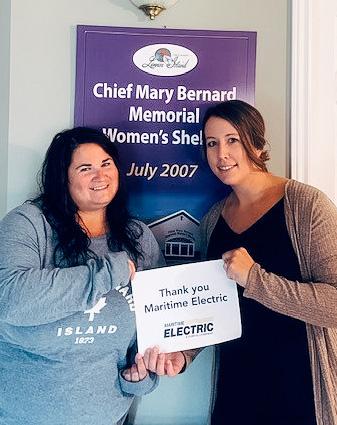
It is important to us that our impact reaches and supports as many Islanders as possible, and also that our community and local organizations know that we are committed to supporting them. We respect the time and dedication of local volunteers who request donations by responding to the majority of donation requests within 30 days.

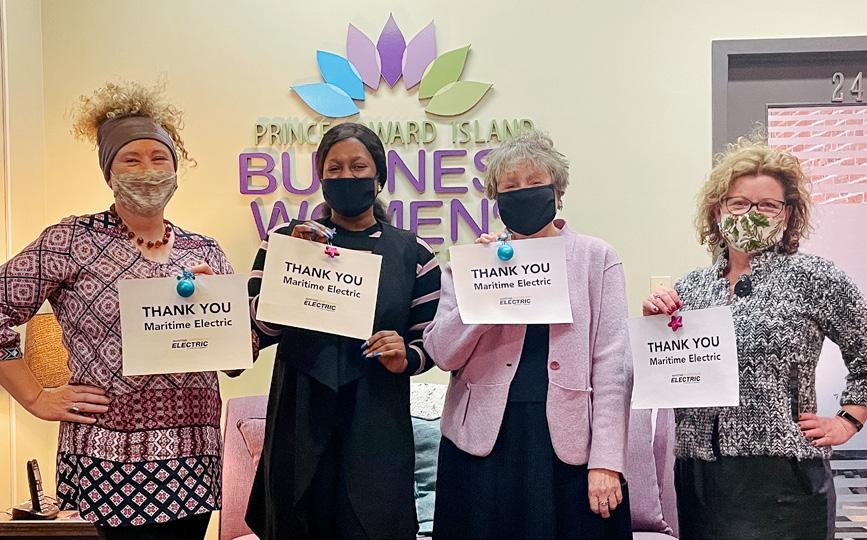

For over 30 years, we have offered a school electrical safety presentation called The Shocking Truth to Grade 6 classes Island-wide. The presentation is available in both English and French. During the COVID-19 pandemic, we provided a new virtual option when schools were doing online learning.
Our safety outreach also includes a number of public safety communications campaigns and partnerships, such as our dump truck safety campaign, “Eyes Up. Box Down. Home Safe.”
We value Indigenous people. For many years, we have worked to support and respectfully engage with local Indigenous communities. The input we receive on our projects helps foster a deeper understanding of Indigenous knowledge and practices. We communicate with the Mi’kmaq Confederacy of PEI and L’NUEY, as they are integral to ensuring a sustainable electricity future. It is also our practice to communicate with the Mi’kmaq Confederacy of PEI and L’NUEY during the planning phase of major projects.
In 2021, we hired an Indigenous sustainability intern
We have supported the Island Nature Trust Piping Plover Conservation Program for ten years. Through this program, the Island Nature Trust helps protect the piping plover nesting grounds on PEI. They also provide information to beach-goers during the summer months to stay away from nesting areas. We are proud to support this program each year to help protect this important species.

in partnership with the Mi’kmaq Confederacy of PEI. The sustainability intern focused on building capacity and assisting with sustainability initiatives. We are thankful for the insight and learnings to date on projects and best practices from Indigenous peoples and orgnizations.
We also participated in a Learning Circle with Indigenous elders in 2021. Our employees are working to learn from our past and grow stronger together for the future.
Over 200 community donations
Achievements Indigenous sustainability internship

Decades of electrical safety education





We are prepared to power PEI’s transition to netzero with electricity.
We support the Government of PEI’s targets of net-zero energy by 2030 and net-zero by 2040. In 2021, our grid was comprised of 86 per cent non-emitting sources. We plan on building upon our non-emitting success by integrating even more renewable energy, including wind and solar, into our grid.
We do not have all the answers today but we’re working on it. Achieving net-zero will require us to consider innovative technologies in the future, such as energy storage. We have a dedicated team of employees who are motivated to building and maintaining an electrical system that powers PEI’s transition to net-zero. We are also working hard to ensure our system can withstand the impacts of climate change to maintain strong reliability performance for our customers.
As our reliance on electricity to power our vehicles and heat our homes increases, it is important that we build a strong and reliable electrical system that can support electrification. We will continue to make prudent investments in infrastructure upgrades and additions to support the additional
We are continuously making infrastructure upgrades and improvements to our system to help power the transition to electric vehicles and home heating.
load of electrification, while focusing on affordability for our customers.
Our vehicle fleet accounts for approximately 30 per cent of our total Scope 1 GHG emissions. In 2021, we developed an electric vehicle roadmap, which outlines the purchase of electric vehicles and the installation of charging infrastructure within our operations. We have a target to convert 100 per cent of our light-duty vehicles to electric by 2032. Currently we have one battery electric vehicle and two plug-in hybrid electric vehicles in our transportation fleet.

In 2021, Maritime Electric partnered with Natural
Resources Canada, the Government of PEI and nine Island communities to install 50 Level 2 electric vehicle charging stations across PEI in Alberton, Charlottetown, Cornwall, Miltonvale Park, Morell, Resort Municipality, Stratford, St. Peters Bay and Three Rivers. The project will help customers transition to electric vehicles and contribute to reducing emissions on PEI.
Achieving net-zero cannot be achieved alone –collaboration with government, communities, Indigenous groups, local businesses, organizations and customers is essential. Together, we can reach net-zero and achieve a sustainable energy future for the next generations of Islanders.
We voluntarily hired an independent consulting firm to complete a full review of our 2021 sustainability key performance indicators. The consultant reviewed samples of data calculations, processes and methodologies; and confirmed the accuracy and validity of the data. The consulting firm also conducted in-person and virtual meetings across departments with senior leadership, internal subject matter experts and our CEO.

Key performance indicators are dated as of December 31, 2021 unless otherwise noted. We chose our sustainability disclosures based on industry best practices, and their relevance and significance to our business. The Greenhouse Gas Protocol Corporate Accounting and Reporting Standards guide our GHG emissions reporting. We plan to expand our list of indicators over time as we continue to expand our sustainability disclosures.
The sustainability data contained in this report was collected from designated senior leaders and experts in various departments. The data was then consolidated and checked by our sustainability department for quality control and signed off by our CEO. We make every effort to ensure the data presented is accurate and complete.
We hired a third-party verification consultant to complete a full review of our 2021 sustainability data. The consultant reviewed samples of data calculations, processes and methodologies; met with various employees; and ensured that the data reported aligned with our reporting to Fortis Inc., the Government of Canada and Electricity Canada.
good or excellent3
Notes
(1) Capital expenditures include all capital investments in the calendar year, including carryovers from prior year projects.
(2) Other customers include street light customers.
(3) Provided by a third party
(4) Oil generation capacity includes the Charlottetown Thermal Generating Station, which was retired on December 31, 2021.
(5) Zero values mean the generating stations consumed more electricity than they produced, resulting in negative net generation.
(6) The Charlottetown Thermal Generating Station operated on standby but did not produce electricity during the reporting period.
Purchased by Maritime Electric and Resold for Customer Use (in GWh)
(1) Nuclear refers to Maritime Electric’s participation in the Point Lepreau Nuclear Generating Station located in New Brunswick.
(2) Other sources from the grid includes electricity purchased from NB Power.
(3) Clean electricity includes non-emitting nuclear energy.

(4) Excludes wholesale sales
(5) Includes losses attributable to the four subsea cables owned by the Government of PEI and operated by Maritime Electric
(6) Variations are due to a low number of injuries resulting in lost days with varying severity.
19.5 per cent of our energy supply comes from PEI wind energy.

Greenhouse Gas (GHG) Emissions
Scope 1 Emissions (in tonnes of CO2 equivalent (“tonnes CO2e”))
From diesel electricity generation1
From the Charlottetown Thermal Generating Station for heating2
From owned vehicle emissions
From facility operations
From SF6 fugitive emissions
Scope 2 Emissions (in tonnes CO2e)
From system losses related to electricity purchased from the grid3
From electricity purchased from the grid for Maritime Electric owned or controlled equipment and facilities4
From district heating energy purchased for Maritime Electric owned or controlled facilities
Scope 1 and Scope 2 Emissions (in tonnes CO2e)
3 Emissions (in tonnes CO2e)
Notes
The hyphens (“-”) in the table above indicate either a new metric and/or data that is not available.
(1) GHG emissions from diesel electricity generation were higher in 2021 than previous years as diesel generation was required more frequently for emergency backup generation.
(2) GHG emissions related to heating have reduced due to the ongoing decommissioning of the plant.
(3) Includes emissions associated with losses attributable to the four subsea cables owned by the Government of PEI and operated by Maritime Electric
(4) Includes electricity consumption from street lights owned by Maritime Electric
(5) Includes Maritime Electric’s pro-rated share based on the program costs of third-party programs
(6) Based on gross generation
(7) Includes emissions related to heating of the Charlottetown Thermal Generating Station
In 2021, 86 per cent of the energy supplied to customers came from non-emitting sources.
Maritime Electric Company, Limited Board of Directors
Notes
(1) Includes water used for heating the Charlottetown Thermal Generating Station and estimates for non-metered sources
(2) Independent directors are directors that are not employees of Maritime Electric, Fortis Inc. or its subsidiaries.
(3) An additional Board member was added in 2021 to accommodate upcoming retirements.
(1) The increase in 2021 was a result of the Apprentice Power Line Technician Training Program.
(2) Includes local purchases, employee compensation and local taxes paid
(3) We received fewer donation requests in 2020 due to the COVID-19 pandemic.


July 5, 2022
Duerden & Keane Environmental Inc. (D&K) is a specialist environmental and occupational health and safety management company with significant experience in the utility sector. D&K (on behalf of Electricity Canada – formerly the Canadian Electricity Association) has conducted the Independent Verifications on all 13 of the Canadian utilities which have achieved the Sustainable Electricity LeaderTM Brand designation. Maritime Electric Company, Limited (hereafter Maritime Electric) achieved the Brand in 2021 and is now publishing its first Sustainability Report. Prior to publication, Maritime Electric retained D&K to verify the data associated with its 95 Key Performance Indicators (KPIs) reported in the following categories: Financial Indicators; Customer Information; Electricity Transmission and Distribution; Electricity Generation; Electricity Purchased; Electricity Deliveries; Electricity Reliability; Employee Safety; Cybersecurity; Greenhouse Gas Emissions; Other Emissions; Water Usage; Waste Management; Governance Indicators and Employee and Social Indicators.

In verifying the data D&K completed the following tasks:
• Review of the methodologies employed by Maritime Electric to determine the KPIs and the raw data requirements;
• Review of the processes and tools used by Maritime Electric to collect, compile, interpret, document and report on the environmental data and other metrics relative to the KPIs;
• Detailed discussions with selected Maritime Electric subject matter experts with responsibilities for collecting, compiling, interpreting, documenting and reporting on the various activities associated with each of the KPIs;
• Detailed discussion with selected Maritime Electric and Fortis Inc. personnel responsible for governance and quality control checks on the metrics relative to the reported KPIs;
• Confirmation of the sources of data used to determine KPIs;
• Conducted checks on selected spreadsheets used in support of the KPIs;
• Recalculation of selected data sets used to ensure accuracy in reporting;
• Confirmation that data was reported consistently by Maritime Electric in its many reporting venues (e.g. Electricity Canada’s annual Sustainable Electricity Program Report; the Maritime Electric Website; Government of Canada Emissions reporting; reports to the Board of Directors, to Fortis Inc. and to regulators).
Maritime Electric provided sufficient information to ensure that D&K could provide an objective and unbiased assessment of the KPIs which are reported in the Maritime Electric Sustainability Report. D&K is confident that the data used in determining KPIs is accurate and that the KPIs are consistently reported. As well, the evidence reviewed and discussed with Maritime Electric subject matter experts demonstrates that the KPIs have been developed and reported in line with utility industry practices and in accordance with accepted standards where applicable. There was no evidence that the KPIs as reported are not a fair representation of the management of the environmental, social and governance aspects of Maritime Electric’s activities.
B.Sc., Ph.D., EP-CEA, EP-EMS(LA), CHSMSA Partner, Duerden & Keane Environmental Inc.
B.Sc., M.Eng., EP-CEA, EP-EMS(LA), CHSMSA Partner, Duerden & Keane Environmental Inc.
